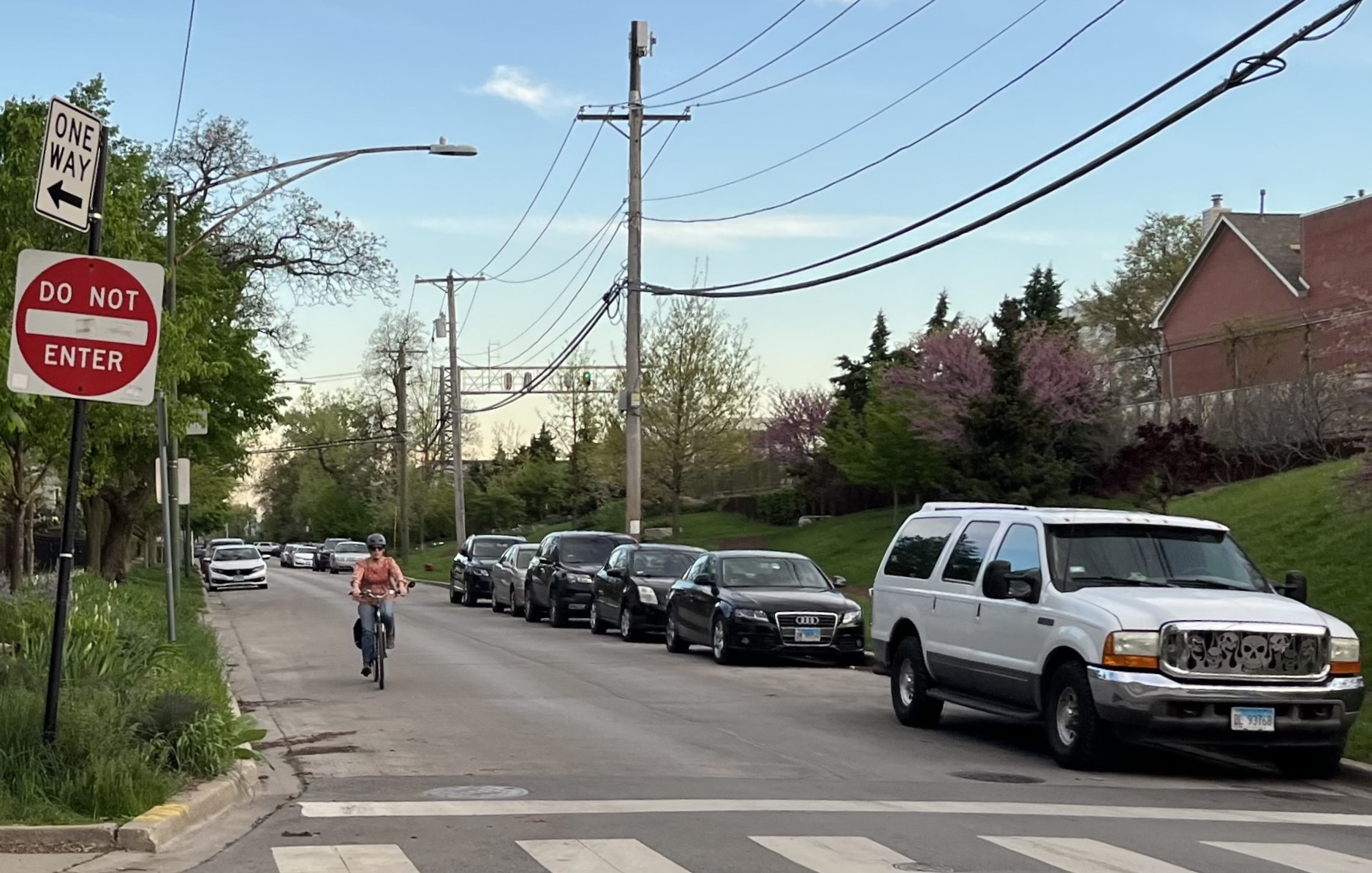A bittersweet look back at 12 months of free Metra Union Pacific line rides
9:56 PM CDT on June 8, 2021
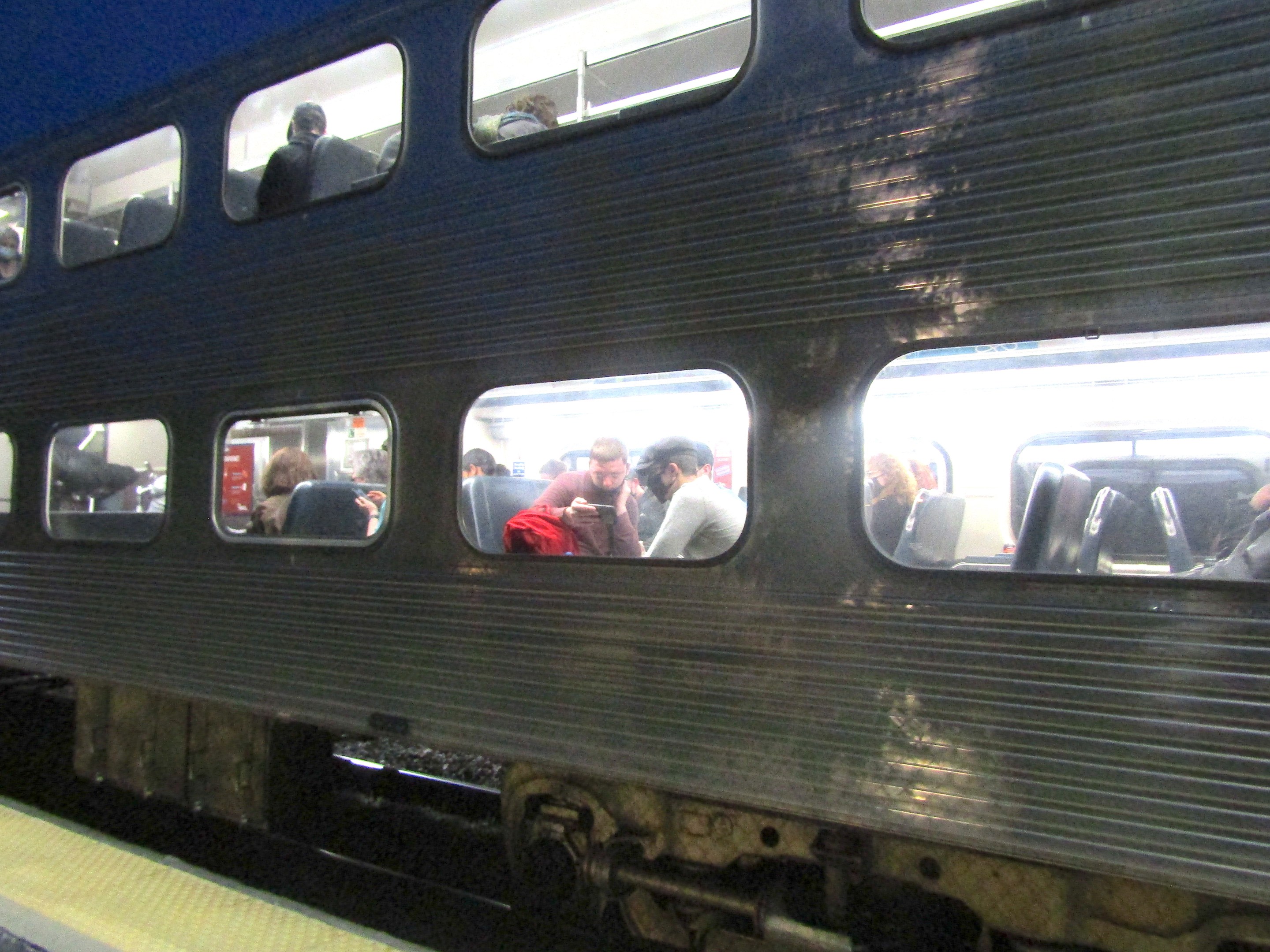
An outbound Union Pacific North line train leaves Rogers Park station. Photo: Igor Studenkov
The free rides were going to end sooner or later. I kept having that thought every time I rode one of Metra’s three Union Pacific lines for the past 12 months, when conductors were not checking tickets. Finally the gravy train ended on the first of the month as conductors resumed fare collection.
Union Pacific has a longstanding agreement with Metra to operate its UP North, Northwest, and West lines, the routes that terminate at the downtown Ogilvie Transportation Center, and whose tracks UP owns. During the COVID-19 pandemic, Union Pacific cited the coronavirus as an reason to not to have conductors collect fares from customers on the three lines, or even walk through the rail cars, although conductors on other Metra-run lines had been doing so since June 2020. Metra said UP’s failure to collect fares was costing Metra $1 million a month.
A railroad industry insider told Streetsblog Chicago that Union Pacific’s recalcitrance was actually a symptom of its longstanding feud with Metra, a strategy to “bleed Metra dry” in order to pressure the transit agency to pay UP to take over operations for the three lines.
Union Pacific did start checking ticked at Ogilvie Transportation Center, the lines’ downtown Chicago terminal, starting Sept. 28, 2020 – but anyone whose trip didn’t involve Ogilvie still rode for free. And Metra wasn’t exactly mollified.
On April 15 of this year, Union Pacific announced that it would start collecting fares again, saying that the wider availability of COVID-19 vaccines was making it safer to collect fares.
As a freelance journalist who doesn’t drive and writes for several city and suburban news outlets, I rely on public transit for both work and recreation. The past 12 months opened up some transit possibilities that would otherwise not be available and gave me greater appreciation for some of Metra’s advantages, while also highlighting the limitations of Metra’s schedules.
My experiences
Union Pacific lines loom large in my American experience. When my family moved from St. Petersburg, Russia, to the United States, we ended up in Palatine, one of the many suburbs that grew around Union Pacific Northwest line stations. I could recite every single station between Barrington (where my mom’s first American job was located) and Ogilvie from memory long before I had a good grasp of English.
As I got older, I ended up riding the lines for work and out of sheer curiosity. Since college, I sometimes went out just to see where the weekend pass could take me. But Metra usage always had a caveat.
While a CTA/Pace 30-day pass let me take 'buses and “L’ trains as often as I wanted, every Metra trip was an extra expense, and fare zones make longer trips more expensive. To a freelancer on a budget, every penny counts. So when, for example, I covered board meetings in Winnetka, I took Pace bus Route 213, which paralleled the UP North line The calculation was different with the weekend pass, which made most round trips cheaper – but I still sometimes ended up taking the bus.
With free Metra rides, the only things that mattered were speed and service frequency. Over the last 12 months, that proved to be an interesting double-edged sword. Metra was faster than buses and the ‘L’ – but only if they arrive at your stop/station within a similar time frame. Metra headways were longer than CTA’s even before the crisis, and pared-down pandemic schedule only deepened the divide. To go back to the Union Pacific North/Route 213 example earlier, I sometimes took Metra and sometimes took the bus – whichever would get me to my destination faster at that particular time of day.
The free Metra rides also made me discover transit options I never considered. I never would’ve realized that most Union Pacific North trains arrived at Ogilvie within 5-10 minutes of Union Pacific West trains’ departure, which made for pretty convenient transfers (the same isn’t true the other way around)
I’ve written articles on just about every public transit service in Chicago area, but not worrying about fares made me really appreciate some of Metra’s advantages. The ride is smoother than with buses and even ‘L’ trains, there are power outlets, and some train cars even have wifi. Writing is easier, and quicker, on trains for me – and, for the first time ever, I started factoring that into my trip planning process.
On August 28, five days after the police shooting of Jacob Blake in Kenosha, Wisconsin and three days after Kyle Rittenhouse shot three people during the protests that erupted in the wake of the shooting, I crossed the border to check out conditions in the city.
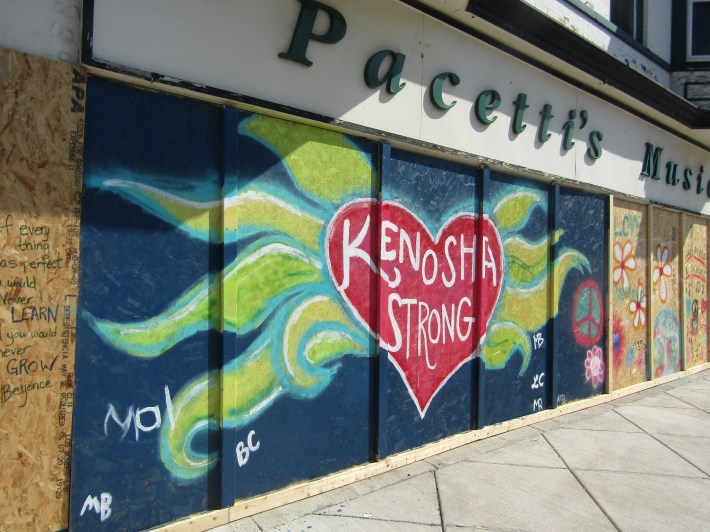
I probably would’ve gone to Kenosha regardless of the fare situation – I’ve been to the city many times before, and I wanted to see the fallout for myself. But I probably wouldn’t have made several visits over the next few months, just to see how things changed after the national spotlight faded. And I definitely wouldn’t have visited a Kenosha book/magazine/Hallmark store I never heard of simply because it started following me on Instagram.
The Final Countdown
Memorial Day weekend marked both the return of Metra’s Saturday schedules and the final days of free Union Pacific lines. And it turned out that I wasn’t the only one who decided to take advantage of the situation.
Riding Metra on Memorial Day weekend almost felt like pre-pandemic normal. The seats, which have been flipped to face each to encourage social distancing, were flipped in the direction of travel. There were more riders on the train than I’d seen at any point in the last 12 months. There was some confusion among the riders about whether the conductions would be collecting tickets. Conductors, who walked through the train cars on regular basis, quickly set them straight.
On Saturday, I took the Union Pacific North line all the way to Kenosha. After all those months of Sunday schedules, when the earliest I could get to the city was at 4:15 PM it was almost surreal to arrive at 2:24 PM. It was even more surreal to realize that, if I missed the 6:49 PM train, I would always catch the 10:20 PM train.
Walking through downtown Kenosha, I saw excited families board a Kenosha Streetcar. Most of the stores and restaurants were open, and many of them were getting steady customer traffic.
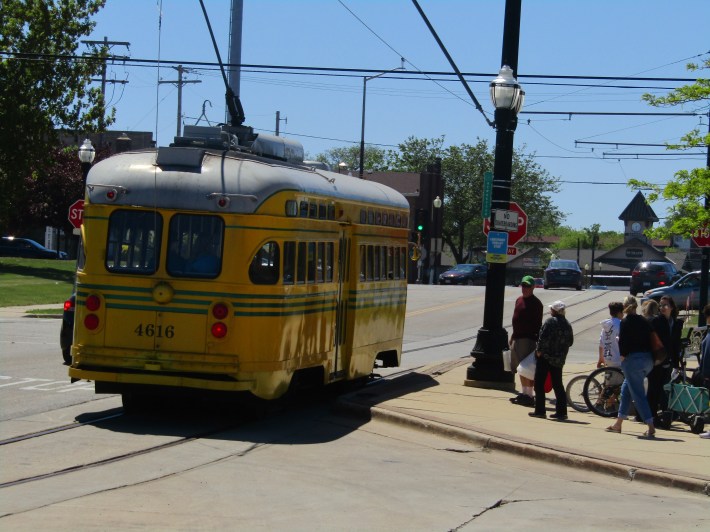
When I was in Kenosha on August 28, I saw all downtown buildings boarded up, and volunteers painting the plywood. Most of that plywood was gradually taken down over the past few months, but some remained. Judging by the signs, many people wanted to keep them there, to preserve the messages of hope, the snapshots of a time that may forever define Kenosha in the broader American cultural conscience.
On Sunday, I took Union Pacific Northwest Line just one stop short of the end of the line, disembarking in Woodstock, the city where Groundhog Day was filmed. I noticed at least eight cyclists and a handful of passengers disembarking with me. “You’re all getting off here?” the conductor chucked good-naturedly.
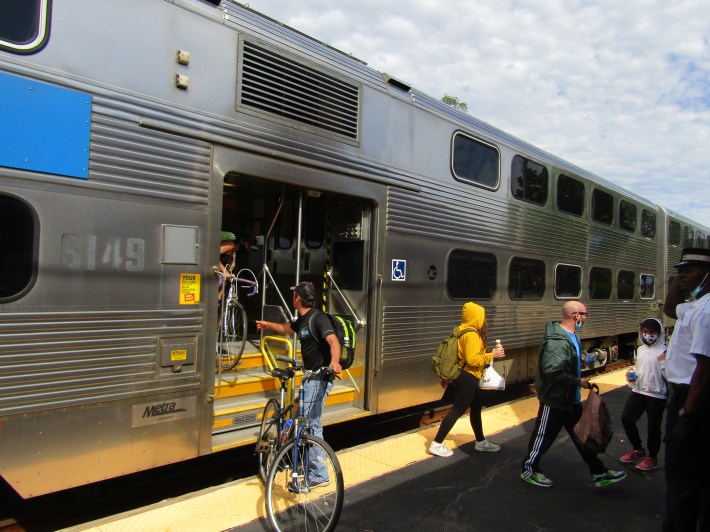
With the Sunday schedule being what it is, I got to Woodstock in late afternoon, when most of the stores were either closed or would close soon. I still ended up checking out the art sale at the Old Courthouse Art Center and visiting a few shops that were open.
I ended up walking around Woodstock outside downtown, just to see what else is out there. I passed by some post-industrial lofts, the still-active manufacturing facilities and the very car-centric shopping plazas, before following the signs back downtown through the residential area filled with split-level homes and buying a few things at a garage sale.
Normally, I would take the Union Pacific Northwest line to Park Ridge and take Pace Route 290 bus back to Chicago – but on that day, I. took Metra all the way, transferring to the North line at Clybourn. With the Sunday Pace schedule being what it is, it was the faster option.
Stay in touch
Sign up for our free newsletter
More from Streetsblog Chicago
Due to incredible support from readers like you, we’ve surpassed our 2023-24 fundraising goal
Once again, the generosity of walk/bike/transit boosters is fueling our reporting and advocacy.
Which Metra corridor would become more bike-friendly and greener under a new plan? Ravenswood!
Thanks to plans to convert little-used parking spaces, the avenue is slated to get a new bike lane, and the Winnslie Parkway path and garden will be extended south.
They can drive 25: At committee meeting residents, panelist support lowering Chicago’s default speed limit
While there's no ordinance yet, the next steps are to draft one, take a committee vote and, if it passes, put it before the full City Council.


